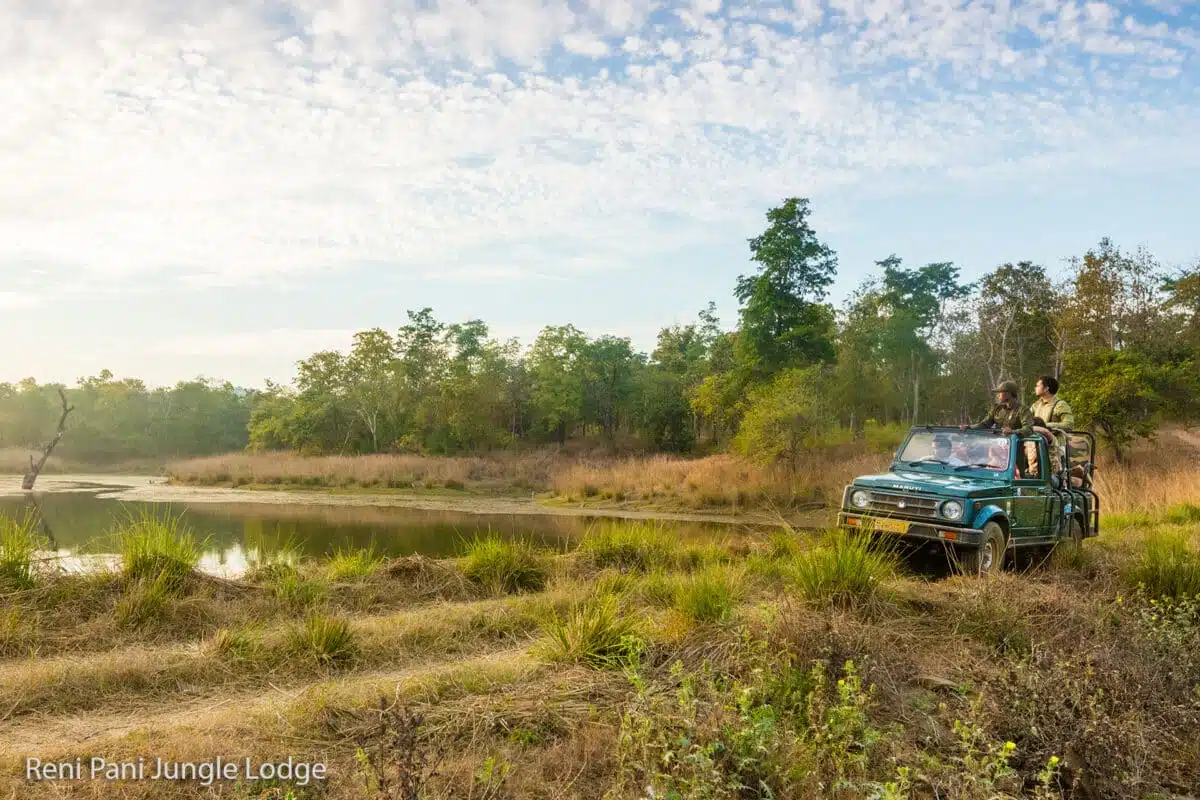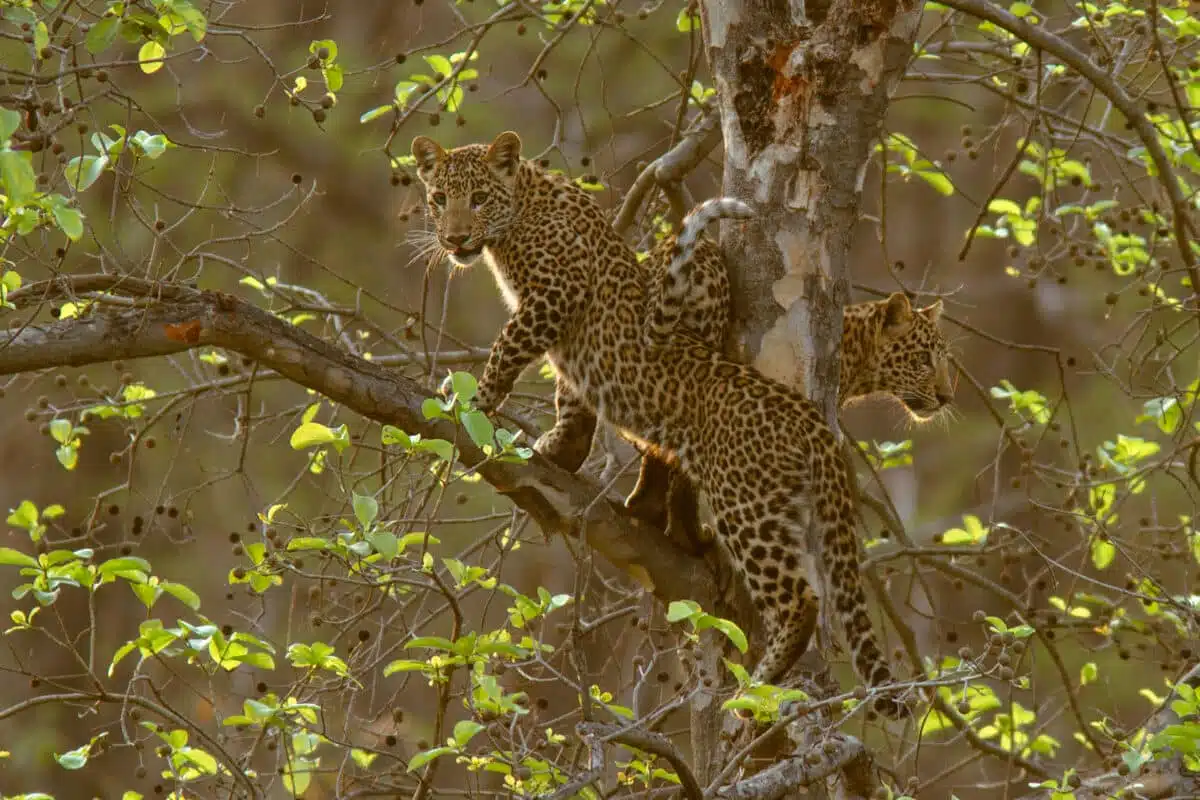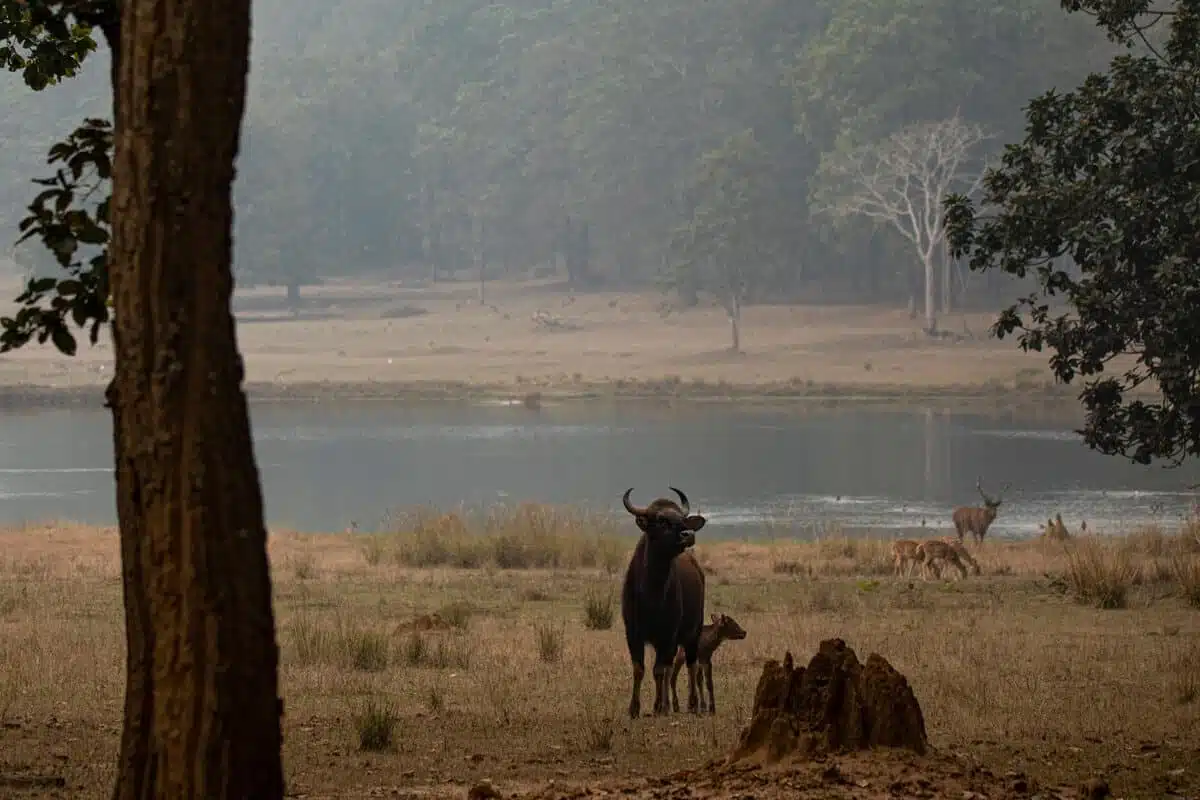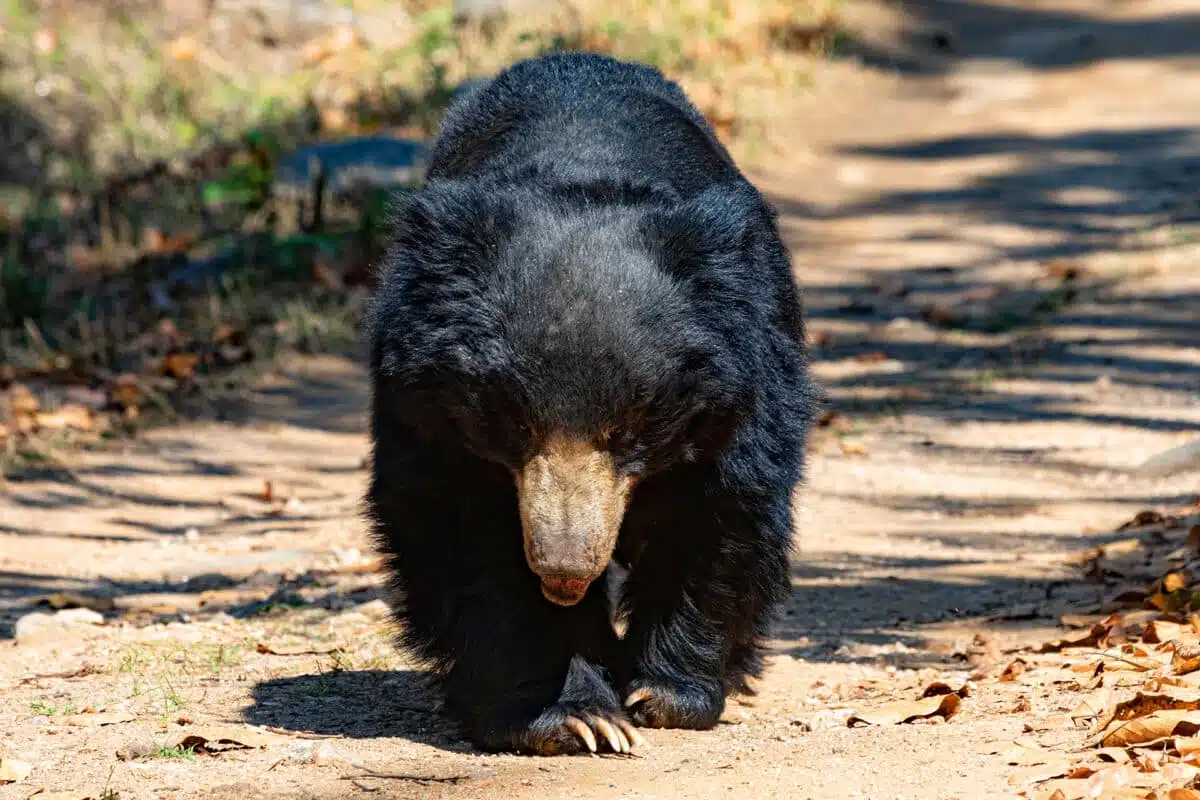Nature photography in the heart of central India

Satpura National Park in Madhya Pradesh is one of the most impressive protected areas in central India. Far from the usual tourist routes, this extraordinary national park offers a pristine wilderness with remarkable biodiversity – an ideal destination for nature photographers looking for authentic wildlife observations in an undisturbed environment. The many opportunities for safaris, including the unique Satpura Night Safari, make this park particularly attractive for photographers.
The vast protected area extends over 524 km² and is an integral part of a complex ecosystem consisting of a tiger reserve, extensive forest corridors and the Pachmarhi Biosphere Reserve. The Satpura tiger population is carefully monitored and protected, making the park an important sanctuary for these majestic big cats. The region is one of the most biodiverse and photographically diverse landscapes in the Indian subcontinent, with several Satpura National Park hotels strategically positioned to provide optimal photo opportunities.
Come out with us!
Bei meiner Fotoreise in den Satpura Nationalpark machen wir gemeinsam unvergessliche Aufnahmen von Lippenbären, Tigern und Leoparden. Wir erkunden Indiens Natur auf ganz neuem Weg – vom Auto, zu Boot und zu Fuß!

Sloth bears & tigers: Satpura – An exclusive photo trip to the heart of India
From March 7-16, 2026, we explore the wild heart of India – Satpura. Sloth bears at dawn, tigers at sunset, leopards in the thicket. An exclusive photo tour through ancient forests, accompanied by experienced guides full of real wild moments.
Geology: The fascinating geological history of Satpura National Park
The geological history of Satpura National Park dates back millions of years and has created a spectacular landscape that clearly sets the park apart from other protected areas in India. The Satpura Range, to which the park belongs, was formed around 60 million years ago during the same tectonic activity that led to the formation of the Himalayas. Satpura National Park is particularly famous for its impressive geological formations, which provide the perfect backdrop for atmospheric landscape shots.

Geological formations and rock types
The geology of Satpura is characterized by three main rock types, which form the foundation for the diverse ecosystems and offer impressive photo opportunities, especially during the Tiger Safari in Satpura:
- Trap rocks: These volcanic rocks were formed by massive lava flows around 65 million years ago during the Cretaceous period. They form the base of many plateaus in the park and are responsible for the characteristic steep slopes. The dramatic formations of these rocks create fascinating photo opportunities, especially during the golden hours of the day. The Satpura National Park Safari takes visitors through these impressive geological witnesses of the earth’s history.
- Sandstones: The striking reddish sandstone formations of Satpura National Park, which glow spectacularly, especially at sunrise and sunset, date back to the Gondwana Age (290-180 million years ago). These porous rocks play a crucial role in the park’s water balance, as they function like natural reservoirs. They store rainwater in their microscopic pores and continuously release it into the environment during the dry season – a fascinating process that offers interesting motif opportunities for nature photographers, especially during the Satpura Night Safari, when the escaping water glistens in the moonlight.
- Conglomerates: These complex mixed rocks, which are mainly found in the lower areas of the park, consist of different types of rock that have been joined together by natural sedimentation processes. They tell the story of geological processes over millions of years and offer not only interesting geological objects of study during the Tiger Safari in Satpura, but also impressive photo opportunities thanks to their diverse textures and shades of color.
In specific areas of the park, limestone, quartzite and slate can also be found, further enriching the geological diversity and offering attractive structures and color nuances for photographers. These rocks contribute to the unique characteristics for which Satpura National Park is famous.
Influence of geology on landscape and biodiversity
The geological diversity of Satpura National Park has far-reaching effects on biodiversity and thus creates a wide range of photographic opportunities:
- Altitudinal variations: The remarkable altitudinal variations in the Satpura Range – from around 300 meters in the valleys to the majestic Dhupgarh peak at 1,352 m, the highest point in Madhya Pradesh – create different microclimates. This climatic diversity favors the emergence of different habitats, which can be optimally explored from the strategically placed Satpura National Park hotels. The different altitudes offer photographers the opportunity to document the Satpura tiger population and other wildlife in a variety of landscape scenarios.
- Watercourses and wetlands: The geological formations have created a complex network of watercourses, the heart of which is the Denwa River. The water-permeable sandstone layers act as natural water reservoirs that provide vital wetlands even during the dry season by continuously feeding springs. These waterholes are popular meeting places for wildlife and offer excellent photo opportunities during the Satpura National Park Safari.
- Soil formation: The weathering of the different rock types has led to the formation of different soil types – from the nutrient-rich volcanic soils to sandy substrates. This soil diversity allows different plant communities to thrive, creating the basis for the extraordinary biodiversity for which Satpura National Park is famous.
Scientists and nature photographers alike appreciate the Satpura National Park geology for its diversity and the opportunity to study and document geological processes. The geological formations not only offer spectacular photo opportunities, but also impressive vantage points for landscape photography and wildlife spotting.
Climate and travel time: When is the best time to visit?
Der Satpura National Park unterliegt einem tropischen Monsunklima mit drei klar definierten Jahreszeiten, die das Erlebnis für Besucher und insbesondere Naturfotografen maßgeblich beeinflussen. Die beste Zeit für einen Besuch im Satpura National Park hängt von den persönlichen Interessen und fotografischen Zielen ab.

The three seasons in detail
Winter (November-March):
- Temperatures: Cool in the morning (10-12°C), ideal for photography in the golden morning light, pleasant during the day (20-25°C)
- Precipitation: Minimal, mostly clear skies with excellent light conditions
- Humidity: Low to moderate, ideal for camera equipment
- Vegetation: Deciduous trees partially lose their leaves, which significantly improves the visibility of the Satpura tiger population
- Wildlife activity: Exceptionally high, especially at the strategically located waterholes
Winter is considered the best time to visit Satpura National Park, especially for photographers. The moderate temperatures allow for extended photo sessions during the tiger safari in Satpura. The improved visibility due to reduced foliage significantly increases the chances of impressive wildlife sightings. The crystal clear winter light also offers ideal conditions for high-quality nature photography. The Satpura Night Safari is particularly recommended at this time of year, as the cool nights encourage the activity of nocturnal animals.
Summer (April-June):
- Temperatures: Hot to very hot (30-42°C), particularly intense in May and June
- Precipitation: Very rare, isolated pre-monsoon storms at the end of May/June offer dramatic photo opportunities
- Humidity: Low to very low, beneficial for photographic equipment
- Vegetation: The sparse landscape is unobstructed due to the reduced foliage
- Wildlife activity: Concentrated at the few remaining waterholes, ideal for wildlife spotting
Despite the heat, summer offers unique advantages for wildlife photography in Satpura National Park. The scarcity of water leads to a concentration of wild animals at the remaining waterholes, which significantly increases the chances of spectacular shots of predators such as tigers and leopards. Most Satpura National Park hotels offer air-conditioned accommodation as a comfortable base between photo safaris. Early morning and late afternoon safaris are particularly productive for photographers at this time.
The Satpura Range shows a different side in every season and offers different photographic opportunities. Satpura National Park is famous for its diverse wildlife and dramatic landscapes that change with the seasons. Professional nature photographers often recommend several visits at different times of the year in order to exploit the full range of photographic possibilities. The Satpura National Park safari offers are tailored to the respective seasonal characteristics.
Monsoon season (July-September):
- Temperatures: Warm (25-35°C) with high humidity, whereby the morning and evening hours are somewhat more pleasant for photographic activities
- Rainfall: Intense and regular, with an impressive annual rainfall of 1,300-1,700 mm, which falls mainly in this period and dramatically changes the landscape of Satpura
- Humidity: Very high, which requires special precautions for photographic equipment
- Vegetation: Lush, lush green growth that transforms the Satpura Range into a tropical paradise
- Wildlife activity: Widely dispersed due to ubiquitous water availability, making wildlife viewing difficult during the monsoon season
Satpura National Park is officially closed to visitors during the main monsoon season. The unpaved paths become impassable and the safety of visitors cannot be guaranteed. Nature uses this time for intensive regeneration, which has a particularly positive effect on the Satpura National Park tiger population. The lush vegetation provides the animals with optimal cover and food.
Best time to travel depending on your interests
- For wildlife spotting: The optimum time for a tiger safari in Satpura is between late winter and early summer (February-April). During this period, the animals concentrate at the few remaining waterholes, which significantly increases the chances of sightings. Satpura National Park is famous for its diverse megafauna, which is particularly easy to observe during this time.
- For bird watching: Winter (November-February) offers the best conditions, when numerous migratory birds use the park as a wintering ground. The moderate temperature allows for longer observation times, ideal for patient bird photography.
- For landscape photography: The early winter (October-November) presents itself with atmospheric foggy moods, which offer impressive photo opportunities, especially during the Satpura Night Safari. Immediately after the monsoon (October), the park is at its lushest green, ideal for dramatic landscape shots.
- For a pleasant climate: The mid-winter (December-January) with its mild temperatures offers ideal conditions for extended photo tours. The Satpura National Park hotels are often fully booked during this time, so early reservations are recommended.
Experienced nature photographers recommend winter as the best time to visit Satpura National Park. This time of year offers a perfect balance of pleasant temperatures, frequent wildlife sightings and diverse photographic opportunities. The clear winter air ensures optimal light conditions, while the reduced vegetation provides a better view of the wildlife.
Location and how to get there: How to get to Satpura National Park?
Satpura National Park, nestled in the majestic Satpura Range, is located in the heart of India in the southern part of the state of Madhya Pradesh. Its central, albeit somewhat remote, location contributes significantly to its pristine and untouched character, which makes it particularly attractive for nature photographers.
Geographical location
The park extends between 22°19′ to 22°39′ north latitude and 77°55′ to 78°15′ east longitude in the Hoshangabad district. The Denwa River forms the natural northern border and flows into the picturesque Tawa Reservoir. The nearest town is:
- Pachmarhi: 55 km away, a popular mountain resort in the Satpura Mountains, which is a good starting point for photo tours.
- Hoshangabad: 70 km away, the nearest major city with important infrastructure for visitors to Satpura National Park
- Bhopal (capital of Madhya Pradesh): 180 km away, as a large city offers extensive supply options and cultural attractions
- Jabalpur: 250 km away, known for its impressive marble gorges and as another gateway to the nature region
- Nagpur: 250 km away, important transport center with excellent connections to the national rail network
Travel options
By airplane:
- The Raja Bhoj International Airport in Bhopal (180 km) is the nearest international airport and offers regular connections to all major Indian cities
- An alternative is Dr. Babasaheb Ambedkar International Airport in Nagpur (250 km), which is also well connected to the national flight network
- From both airports, visitors can easily reach Satpura National Park by rental car or air-conditioned buses, traveling through the scenic Satpura Range
By train:
- Pipariya railroad station (55 km) is strategically located on the main line between Mumbai and Delhi and is served by numerous fast and express trains

